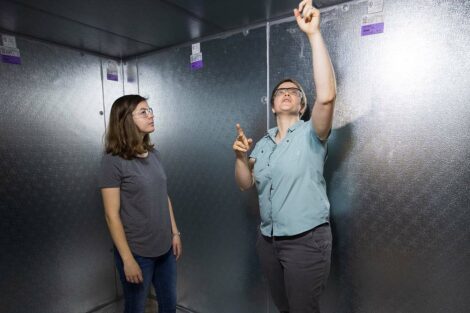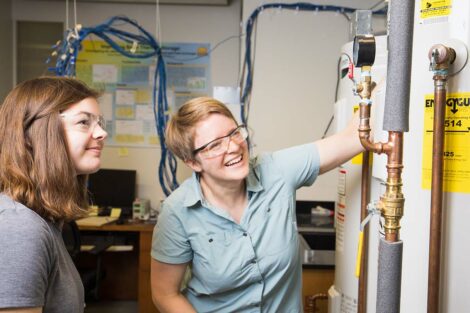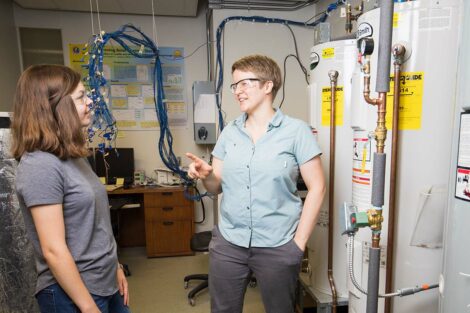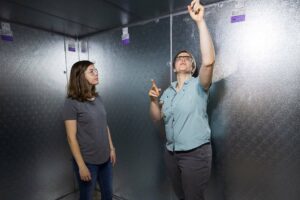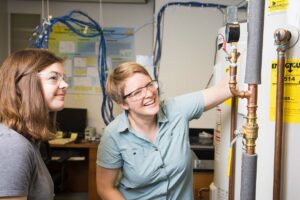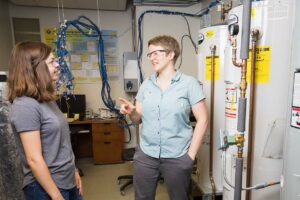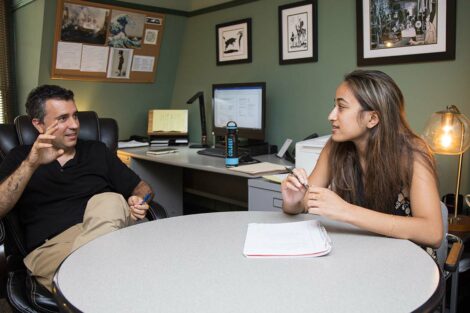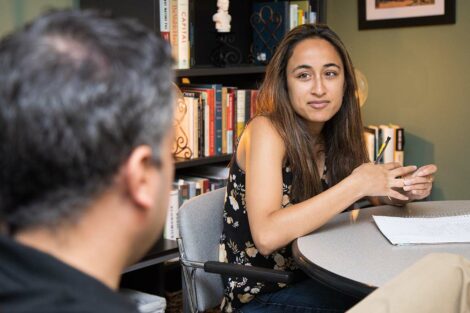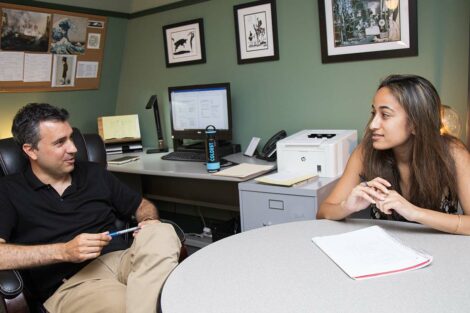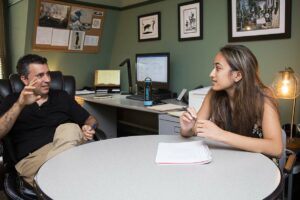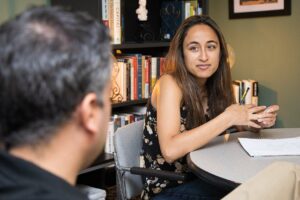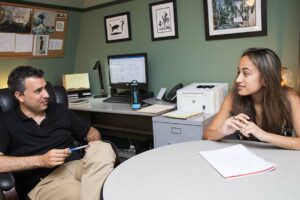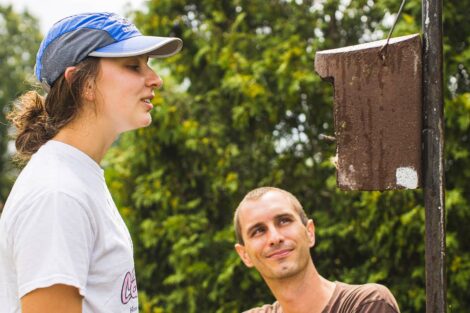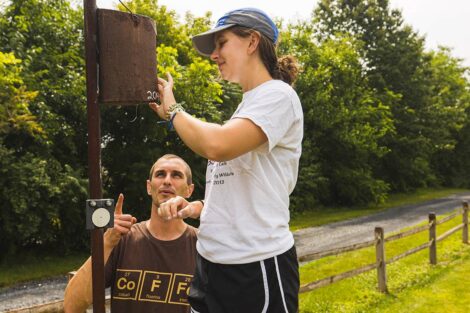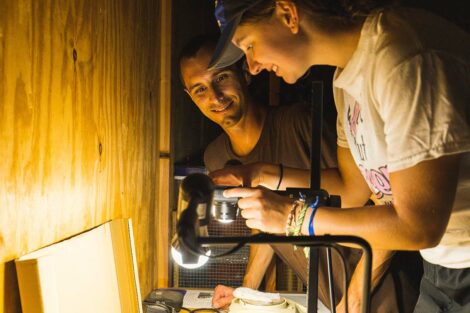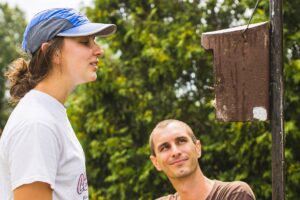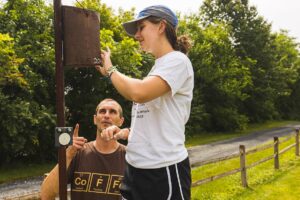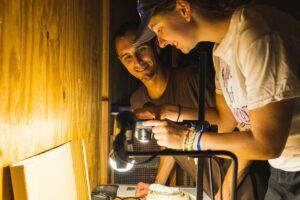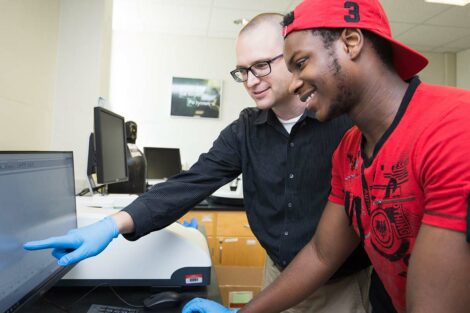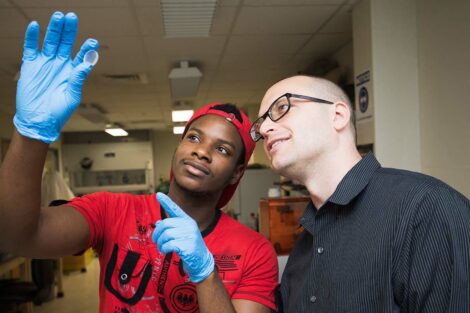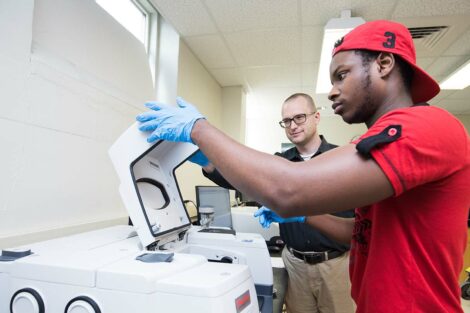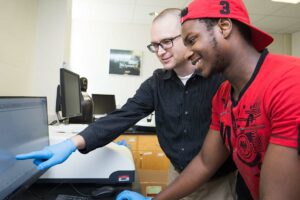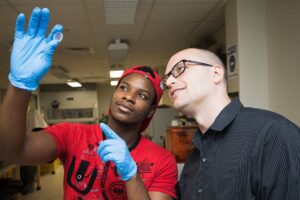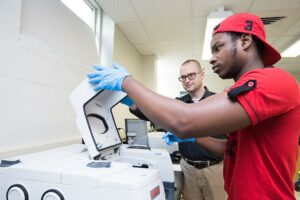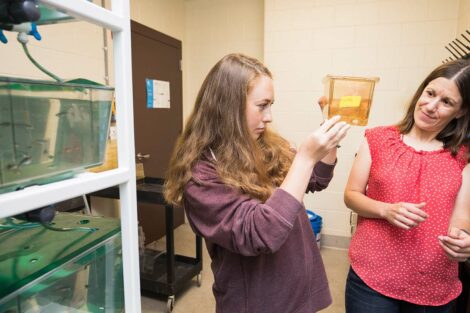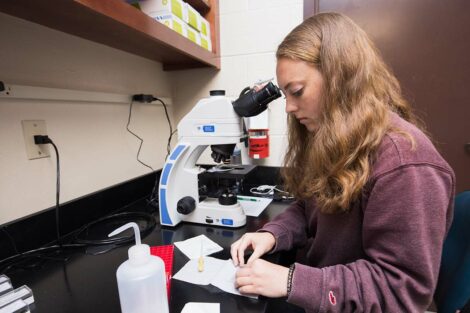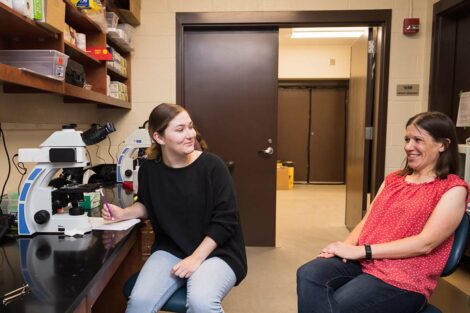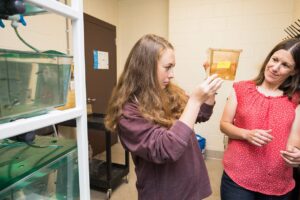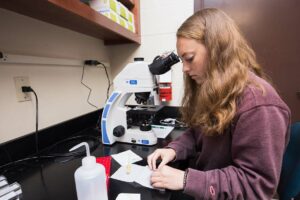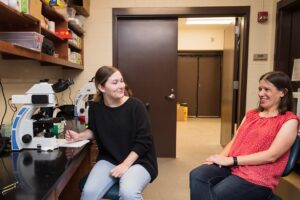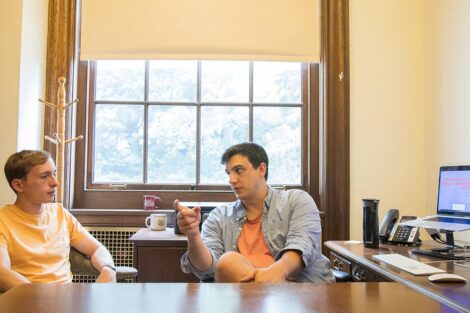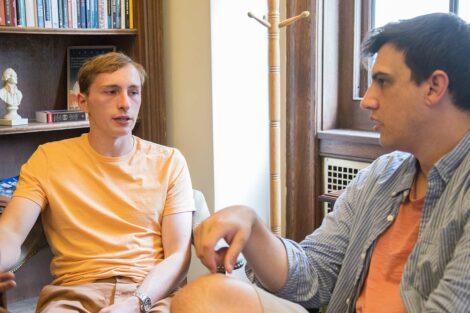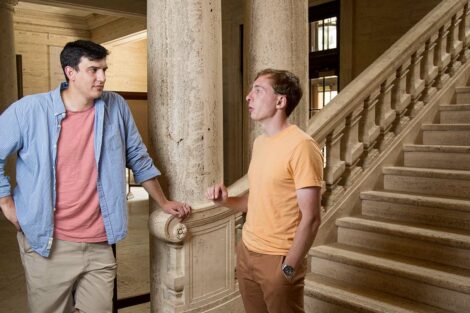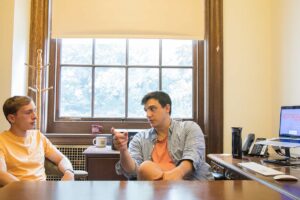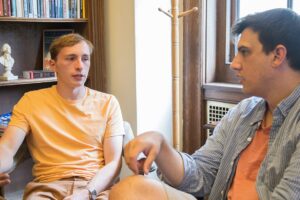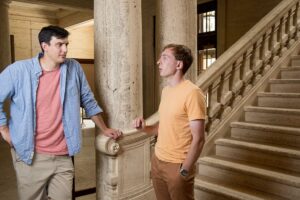Notice of Online Archive
This page is no longer being updated and remains online for informational and historical purposes only. The information is accurate as of the last page update.
For questions about page contents, contact the Communications Division .
Research at Lafayette doesn’t take a summer break. Students and their faculty mentors have been busy compiling data, conducting experiments, and making discoveries
Each summer, Lafayette students have the opportunity to work directly with faculty members on immersive research projects. This year, 125 students participated in these collaborations, which advance the lessons taught in the classroom while also enabling students to develop new skills that can benefit them in their future studies and careers.
“I am so grateful to have been able to work on campus as a Clare Booth Luce Scholar this summer,” says Celeste Fieberg ’22 , a mechanical engineering major. “The experience provided me with many engineering and research-oriented skills that will help me in my engineering classes.”
“The atmosphere on campus also added to the experience,” she says. “I had so many friends on campus who were staying for research, work, or internships. Being able to participate in an engaging and compelling research project while also being involved in an active, friendly, and supportive social environment made for an all-around great summer at Lafayette.”
Read on to learn more about the work Fieberg and a few of her fellow summer scholars completed this summer.
The team: Fieberg and Amy Van Asselt , assistant professor of mechanical engineering.
Fieberg worked on two five-week projects with Van Asselt. Her first entailed building a psychrometric chamber, a room that produces constant temperature and humidity to create a suitable environment in which to test HVAC equipment. For the second half of her summer, she focused on how water-heater energy storage can enable solar power use in residential buildings in Los Angeles. ''I used a variety of different software to gather weather data, solar data, load data, and information about carbon dioxide emissions and electricity rates,'' Fieberg says. ''At first it was difficult to learn how to use each of these programs, but I accepted the challenge and loved learning more about each one. I also enjoyed learning about the different agencies and people who come together to create electricity rate structures, laws concerning solar panels, and water heaters themselves.'' ''I am grateful for this opportunity because it allowed me to dive into a topic in mechanical engineering even though I had no real prior experience in the topic,'' she says. ''I now come away from the research project knowing so much more about building energy systems from the standpoint of an engineer. This research has caused me to be more interested in the sustainability and environmental aspect to engineering. In the future, I would like to develop an algorithm for the load shifting of an electric hot water heater which would be used to design smart hot water heaters.'' The team: Kamal Bookwala , economics major and Joaquin Gómez-Miñambres , assistant professor economics
The team: Julianna Carpenetti ’21 , biology major, and Mike Bulter , associate professor of biology
The team: Alex Ashley ’22 , chemical engineering and mathematics double major, and Ryan Van Horn , assistant professor of chemical engineering
The team: Caleigh Schmid ’21 and Lauren Parkinson ’20 , neuroscience majors, and Tamara Stawicki , assistant professor of neuroscience
As EXCEL Scholars, Schmid (above left) and Parkinson conducted research with Stawicki (above right). Stawicki researches the mechanisms of drug-related hearing loss specifically caused by a subclass of antibiotics called aminoglycosides, which kill sensory hair cells that enable hearing. ''The goal of my research was to identify the mechanisms by which heavy metals, such as cadmium, enter hair cells,” Schmid says. “We used zebrafish as a model, because they have a line of hair cells that are morphologically similar to those in mammals and are located at the surface of their bodies, making them easy to treat with drugs and subsequently examine. We studied normal zebrafish or zebrafish with mutations to see how they respond to certain drugs, or cadmium.'' ''Working hands-on in a lab builds on the curriculum here and reaches far beyond it,” says Parkinson (above left). “There is a large disconnect between learning about PCR, gel electrophoresis, or genetic editing and actually doing it. Beyond that, I have learned a great deal about the process of doing science and what goes into getting work published. My experience has also improved my communication and critical thinking skills.'' The team: Trevor Goodwin ’20 , economics and government & law double major, and Andrew Clarke , assistant professor of government & law
Goodwin conducted research as an EXCEL Scholar on ideological factions in the House of Representatives with Clarke. Their research seeks to better understand why representatives join organized factions (for example, the House Freedom Caucus, Blue Dog Coalition) and the impact the factions have on political parties. ''The broad question we went into this summer with was ‘do factions steal from the party?’ In other words, do factions draw ideological donors away from the party, thus weakening the party's financial war chest,” Goodwin explains. “As part of that we have spent a lot of time with a data set derived from FEC campaign finance records that contains over 300 million contributions from 1979-2018 to get a descriptive overview of who donates to these ideological factions.'' ''In addition to learning a lot about the topic, I gained a lot of skills and insights into this sort of quantitative research,” he says. “Coming into this summer, I did not have much data science experience, and I had to quickly get up to speed to work with such a large data set. I have gained a lot of new skills and now have a greater appreciation for the research process. I plan on continuing to help through the upcoming semester so that I can be a co-author on the piece along with Claire Swanson [’19], a previous EXCEL Scholar with Professor Clarke.''
Categorized in: Academic News ,
Biology ,
Economics ,
Faculty and Staff ,
Featured News ,
Government and Law ,
Interdisciplinary ,
Mechanical Engineering ,
Neuroscience ,
News and Features ,
Research ,
Students
